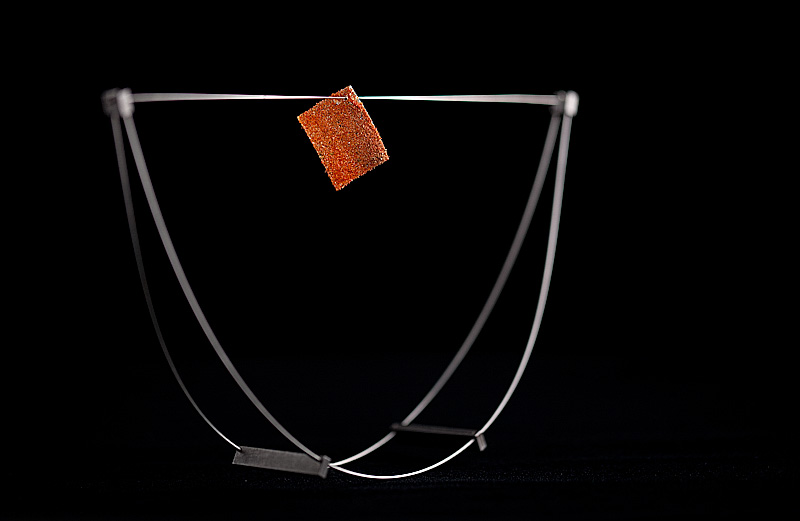
“Almost everyone has had pepperoni pizza and can remember exactly what it tastes like. While there may be variables that come with pizza’s numerous toppings, the core flavors of tomato, cheese, and garlic are nearly universal. The pepperoni merely adds a paprika and fennel seed element to the mix. We all became very excited by the prospect of turning this edible paper into a culinary joke, and Carrier sent one of the externs to the grocery store to buy some mozzarella. I began mixing powders of garlic, tomato, smoked paprika, and fennel pollen together in a ratio that tasted about right. When the extern came with the cheese I grated it into a large saute pan and fired it in a hot oven. I wanted the cheese to caramelize the way it does on the edges of the crust of a pizza that has been overladen with cheese. Once it was browned we hung the pan and collected the rendered cheese fat in a small cup. The fat was then placed in the fridge, where it set up into a butterlike consistency.”
–Chef Grant Achatz, Life, On The Line
Survey says: too cool not to try.
The “pepperoni pizza” joke is one I’d read about before; there’s even a snippet (and photo) of it in the Alinea cookbook. It hails from Chef Achatz’ days as the head chef of Trio in Evanston. As I’ve learned bits and bobs throughout the course of this project I’ve taken little guesses as to how one might make it, but last year when I read his autobiography I was stunned (and excited) that the recipe is more or less laid bare. Given my frustration with myself at tending to follow recipes verbatim first and taste things second, I really liked the obvious lack of precision that went into making something that looks so precise. “Just do stuff until it tastes good” is pretty fun.
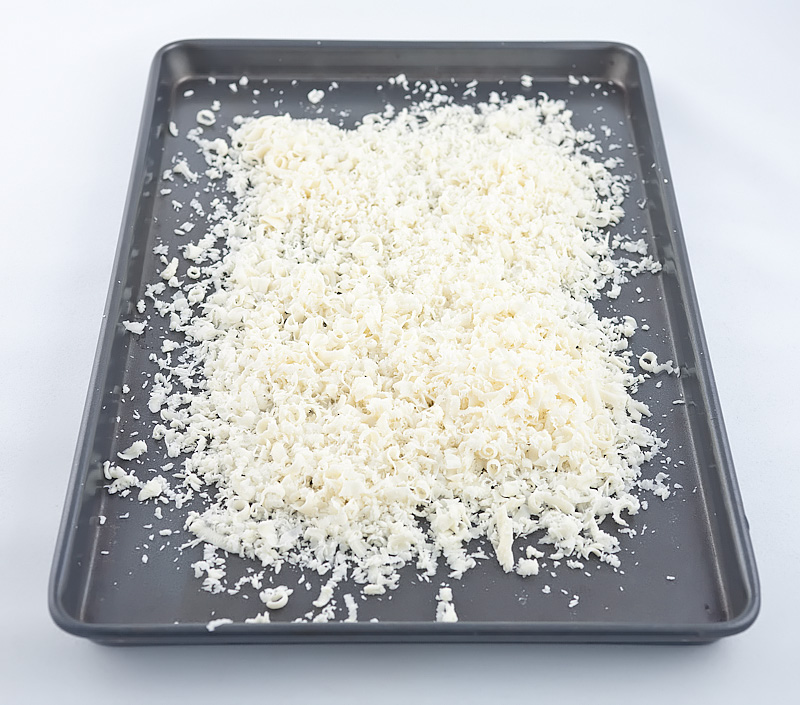
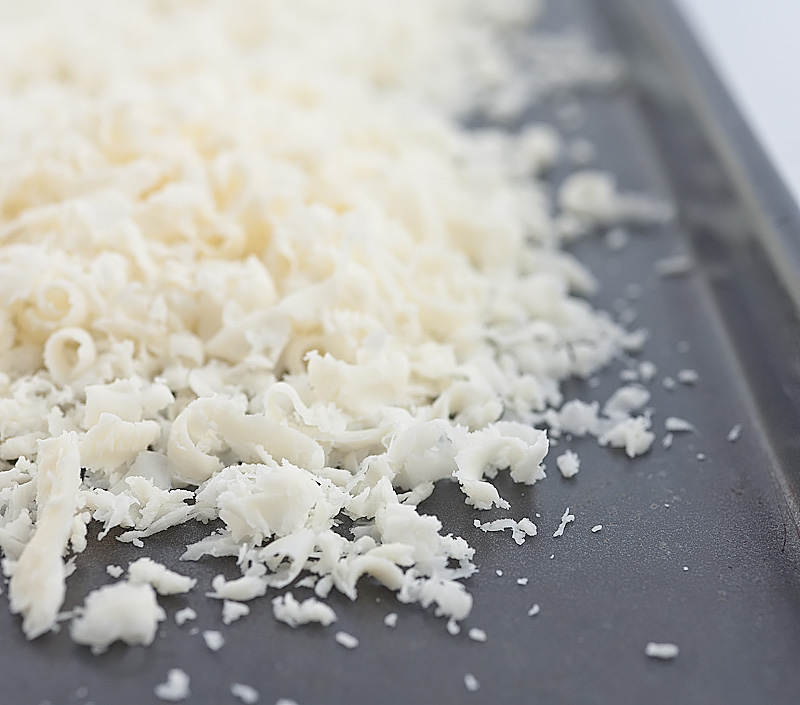
I started with a 1-lb chunk of full-fat mozzarella. I grated this onto a sheet tray and baked it in the oven until much of the fat had rendered off the cheese and it had turned brown and bubbly and pizza-like. Draining the fat off of this is a little tricky; the cheese itself isn’t very permeable, so the oils get trapped in the cheese-bubble pockets and congeal before they have a chance to run off. I found I got a better yield by just cooking shredded mozzarella in a saute pan on a burner, periodically pouring off the oil. After a few hours in the fridge this oil set up exactly as he describes: butterlike and firm, and smelling sort of toasty and nutty.
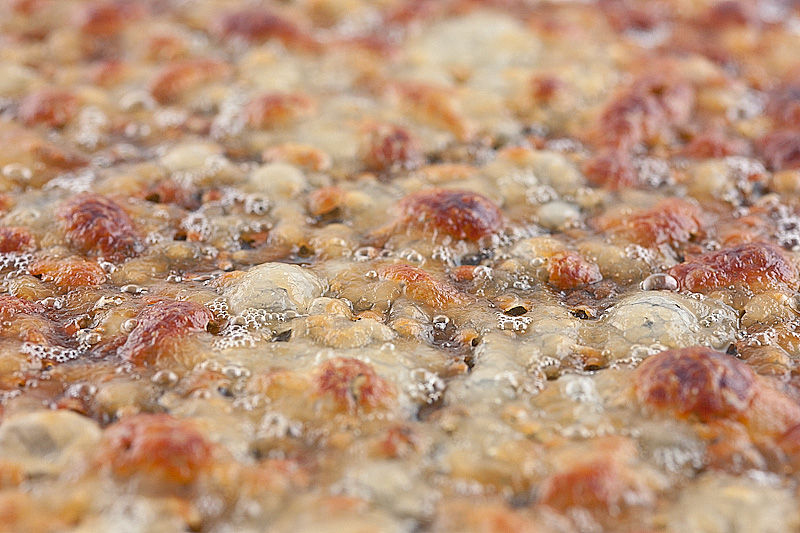
For the dried ingredients, I turned to the Spice House; these guys have a pretty huge collection of stuff and their prices are much nicer than what I typically find in markets around here. Tomato powder, despite not being readily-found in supermarkets, is a fairly common staple. It finds use in things like emergency ration packs and disaster preparedness kits, and also serves as a base in many of the pre-mixed spice rubs one can find for meats and poultry. It has a confectioner’s sugar-like consistency and can cake easily, so I store it in the fridge. It dissolves very quickly on the tongue, and in amounts any larger than a sprinkle forms a thick, sweet tomato paste in the presence of moisture.
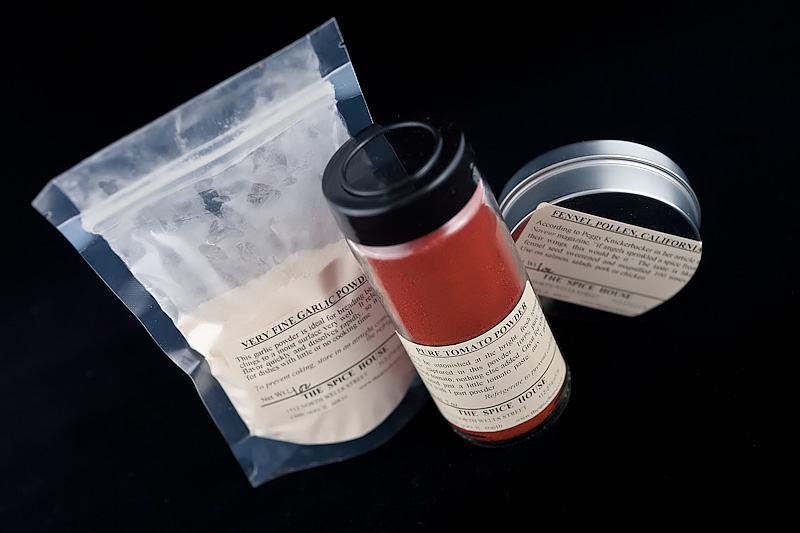
The note about pepperoni effectively just being fennel and paprika was surprising to me, largely because it hadn’t ever occurred to me to ask what’s in pepperoni. I flipped through the Charcuterie cookbook to find–sure enough–a recipe for “peperone”, which describes a process of curing ground beef or pork with a mixture of paprika, ground fennel, allspice, and cayenne. I ordered some fennel pollen as Chef Achatz mentioned, which I found has a powerful ‘fennely’ smell but also several other more-subtle notes as well. I’d wondered why I couldn’t just use fennel seed, but when I compared the pollen to some dried fennel seeds I had, there was no contest: the pollen was overwhelmingly aromatic and punchy.
What is fennel?
The bulb, foliage, and seeds of the fennel plant are widely used in many of the culinary traditions of the world. Fennel pollen is the most potent form of fennel, but also the most expensive. Dried fennel seed is an aromatic, anise-flavoured spice, brown or green in colour when fresh, slowly turning a dull grey as the seed ages. For cooking, green seeds are optimal. The leaves are delicately flavoured and similar in shape to those of dill. The bulb is a crisp, hardy vegetable and may be sautéed, stewed, braised, grilled, or eaten raw.
Fennel seeds are sometimes confused with those of anise, which are similar in taste and appearance, though smaller. Fennel is also used as a flavouring in some natural toothpastes.
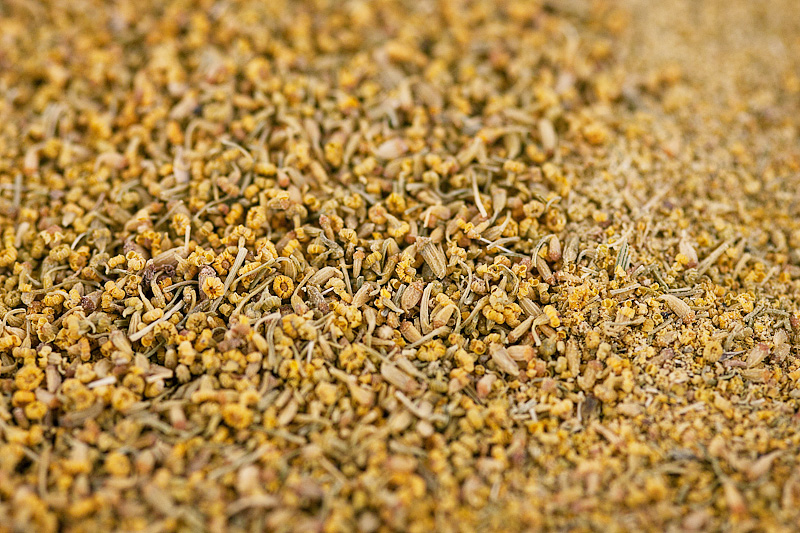
I ordered “very fine” garlic powder, which has a flourlike consistency. I knew I’d need something that would dissolve quickly and deliver as much flavor as possible. The ‘garlic powder’ one usually finds in grocery stores is actually ‘garlic granules’, with a size closer to that of cornmeal or something; it’s better for use in cooking, when you’re offering the granules heat and time to break down.
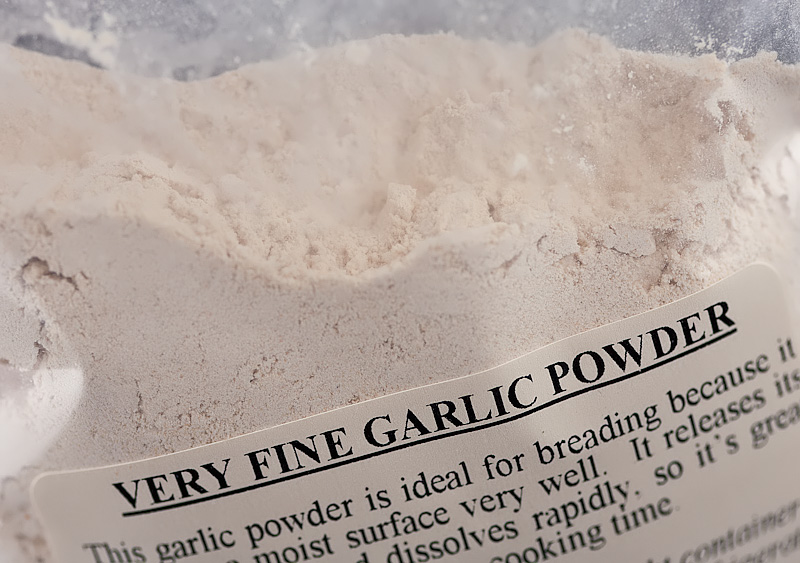
From here I started measuring out small amounts of each of the fennel pollen, tomato, and garlic powders, along with some smoked paprika. I also blanched and dehydrated some fresh oregano until it was crisp, and crushed that into a powder in a mortar and pestle. I did the same with some salt and pepper as well.

Then I just started mixing and tasting. The tomato powder is powerfully sweet, so most of the work was trying to balance that.
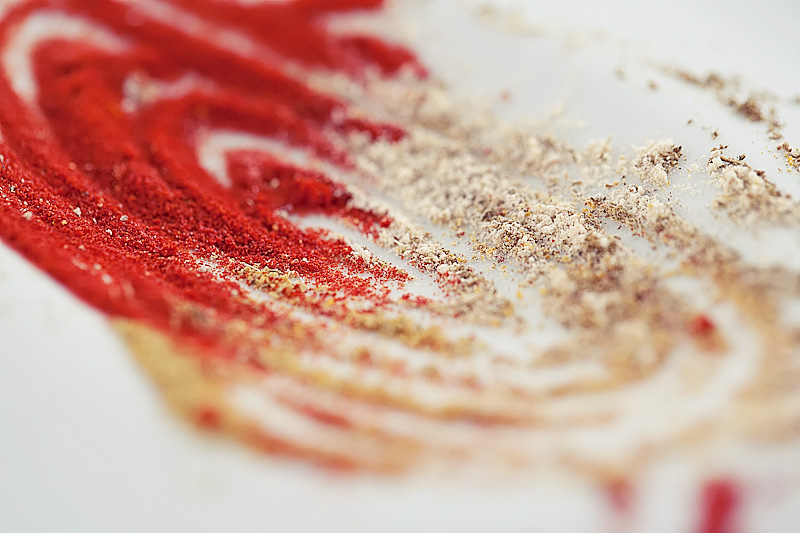
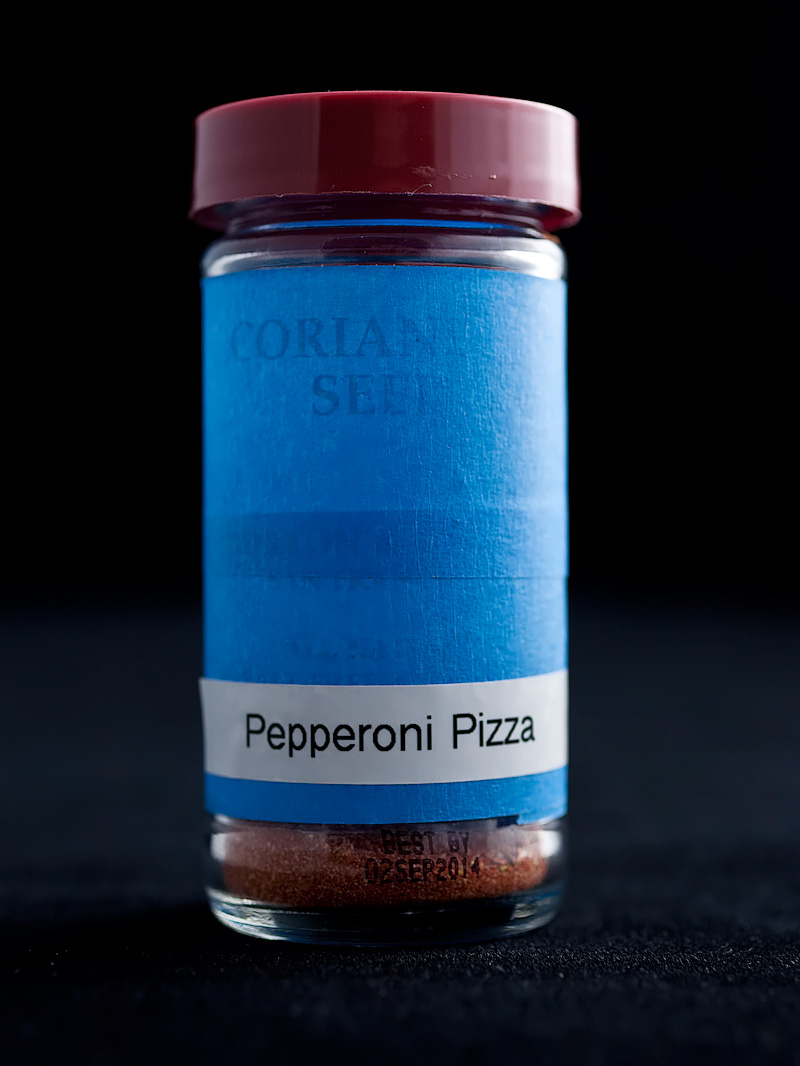
After I’d gotten something that tasted pretty reasonable, I cut some small squares of “obulato”, or potato starch paper. This stuff has captured the imaginations of both Achatz and Ferran Adria in years past; it’s a thin ‘paper’ made from potato starch that dissolves in the presence of water but not oil or fat. I find it up at the Tokyo Fish Market in Berkeley, where they sell it in small pouch form. It’s meant to hold herbal home remedies (sort of a poor man’s substitute for gelatin capsules). I haven’t found it in any other form yet and it’s tough to find online, though I have seen potato starch flour in Asian groceries around here and am curious how reasonable it would be to just try making some myself.
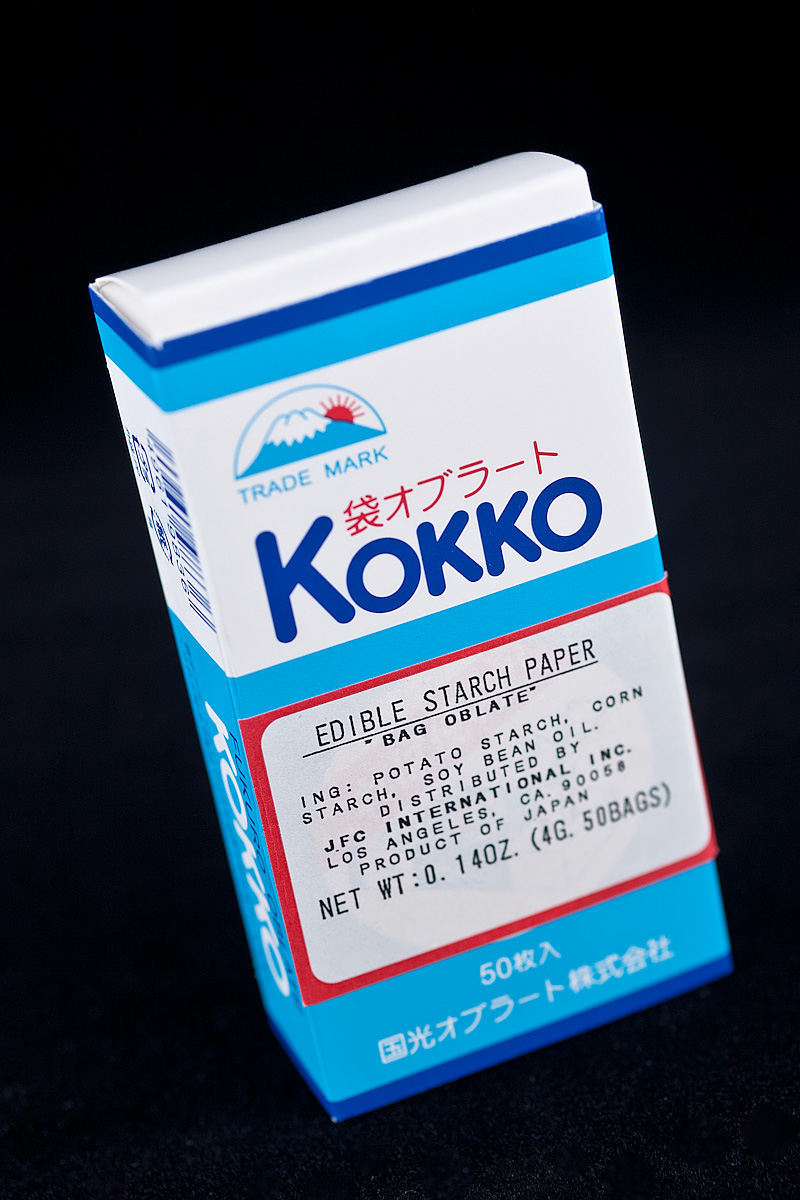
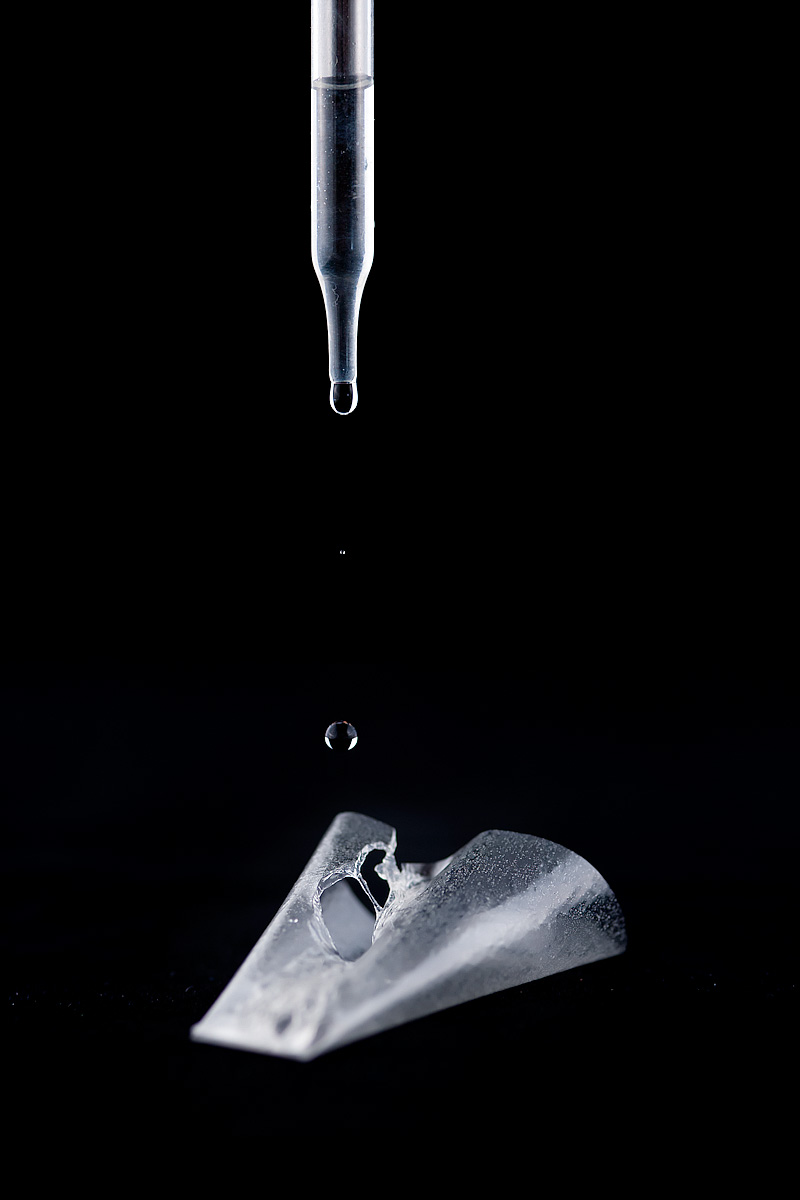
Once I’d cut down some small postage-stamp-size pieces, I smeared the congealed cheese fat onto the paper, then sprinkled my magic pepperoni pizza powder on them.
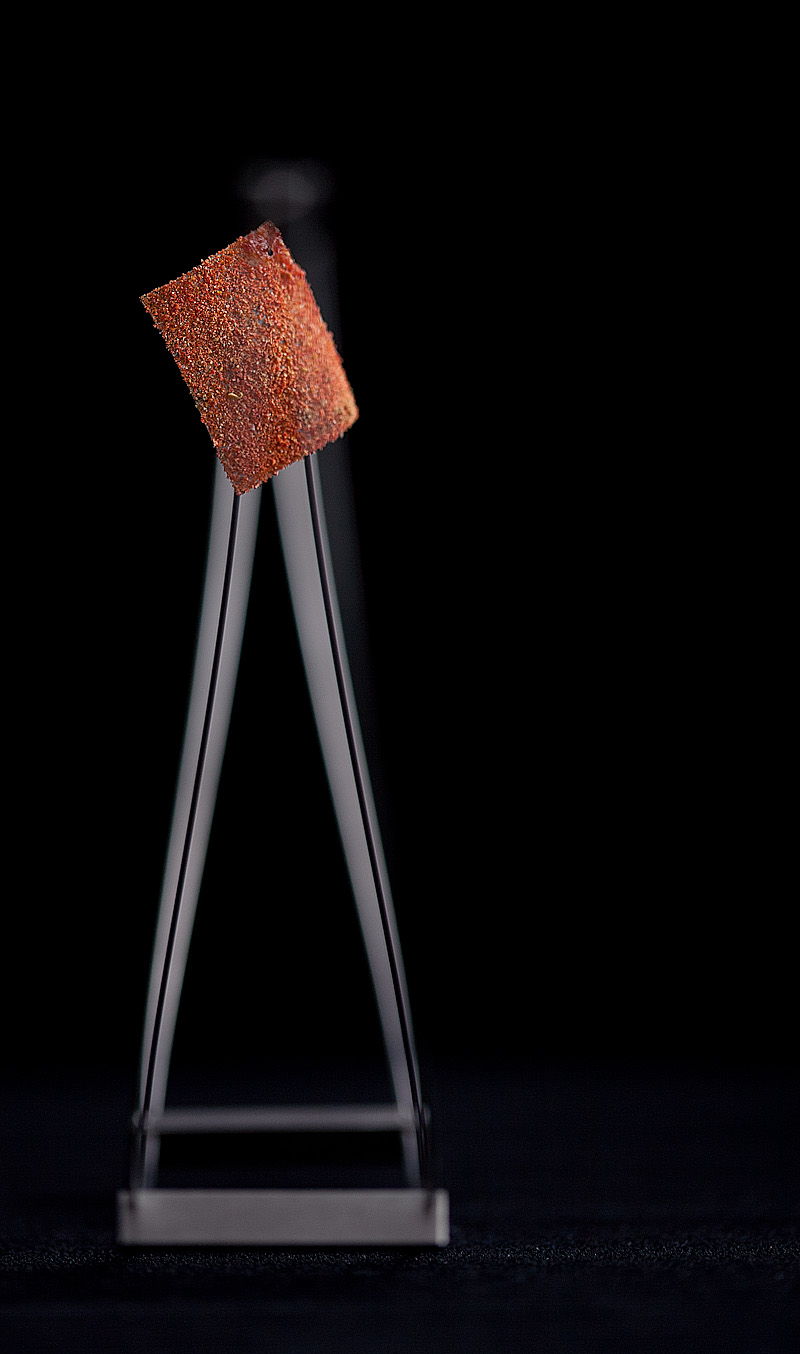
I took one to Sarah and presented it without comment; she placed it on her tongue, studied it for a few seconds, and then exclaimed “Holy shit dude. That tastes just like pizza.” It did to me as well, or maybe more like rich marinara; I think I could have pushed the fennel a bit more, and maybe actually tried rendering some fat from some pepperoni slices. Missing are the ‘meaty’ notes, the umami you find in pepperoni, but that’s offset by the overwhelming familiarity of the other flavors; really what it’s playing on is a person’s memory of what a pepperoni pizza tastes like, and as such it’s a bit of an oversimplification. At any rate though, it was delicious and fun as hell.
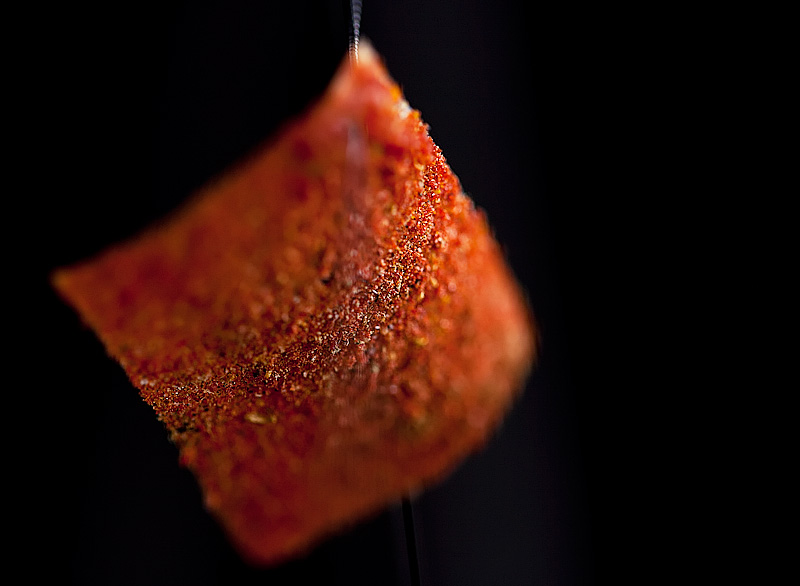
Finally, I often make a modified version of some of these photos that I use as my desktop background. Here’s the one I made this week; if you click on it, it’ll take you to a full-res version of the image that you’re welcome to download if you like.
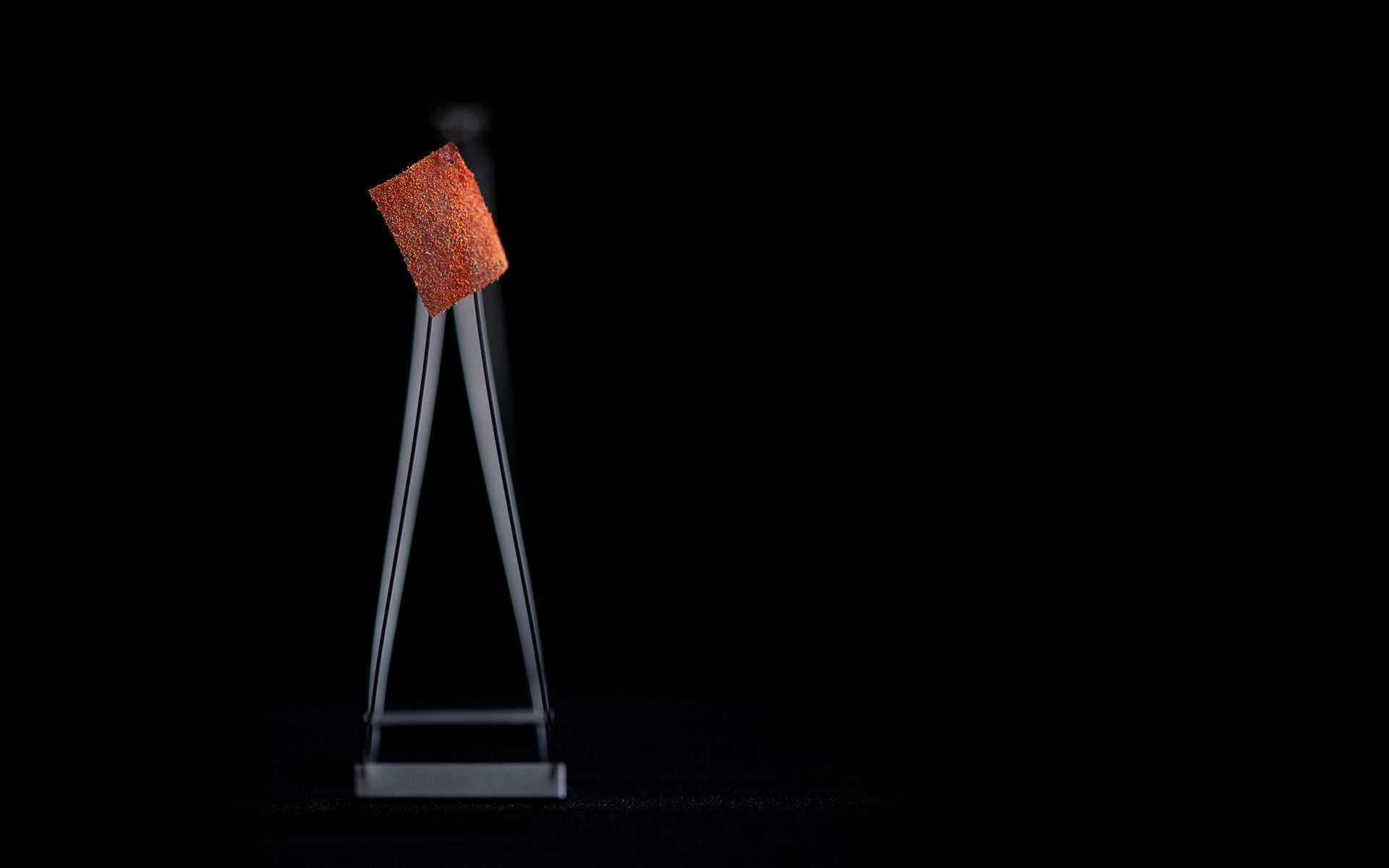
Very cool, Allen. Would it be too much to ask you to share your pizza powder ratios? I think it would be fun to pass around these little squares at a party.
There was a short article about fennel pollen by Daniel Patterson in Lucky Peach no. 2. Apparently, it’s not that difficult to harvest and dry yourself. I have no idea where I’d find wild fennel around where I live, but maybe you’ll have better luck.
Hey Katie!
I would be entirely happy to, if I actually kept track of it! I specifically didn’t pay very close attention just to stay in the “mix it up until it tastes good” mindset. I started with tomato powder, then added some garlic a bit at a time until it tasted garlicy but not overpoweringly so. The fennel pollen brings in an anisey component, and the paprika brings in a sweet/smoky component. All the flavors are atomic and unique enough that if I tasted as I went, it was easy to sort of ‘stay calibrated’ and gauge what flavors I wanted more of. I tended to ‘creep up’ on amounts, adding things a little at a time so that I didn’t overshoot. In the end I also ground up some salt, because my tomato powder was very sweet. The salt kicked everything up and brought it together to taste pizza-y.
Sorry I’m not of more help!